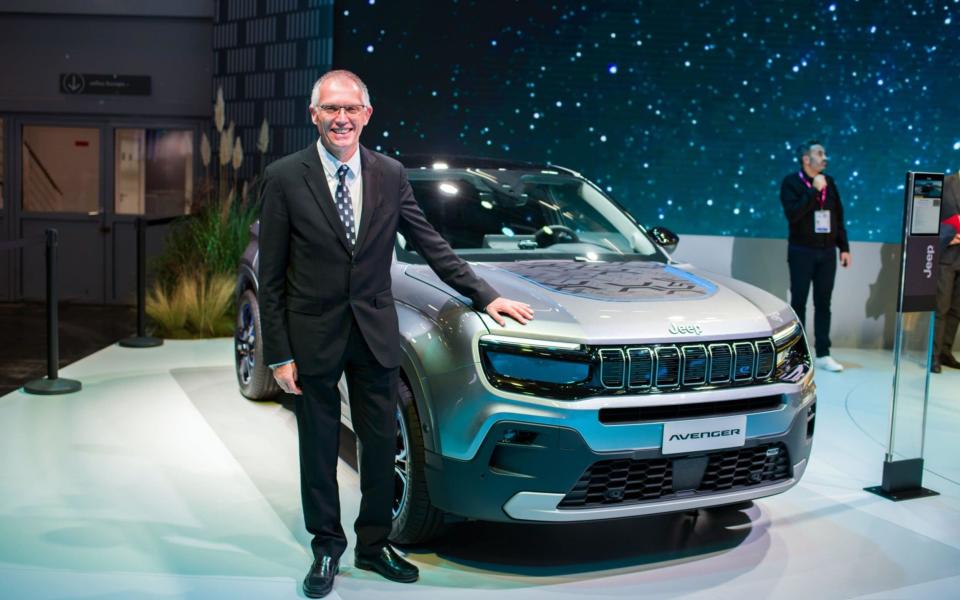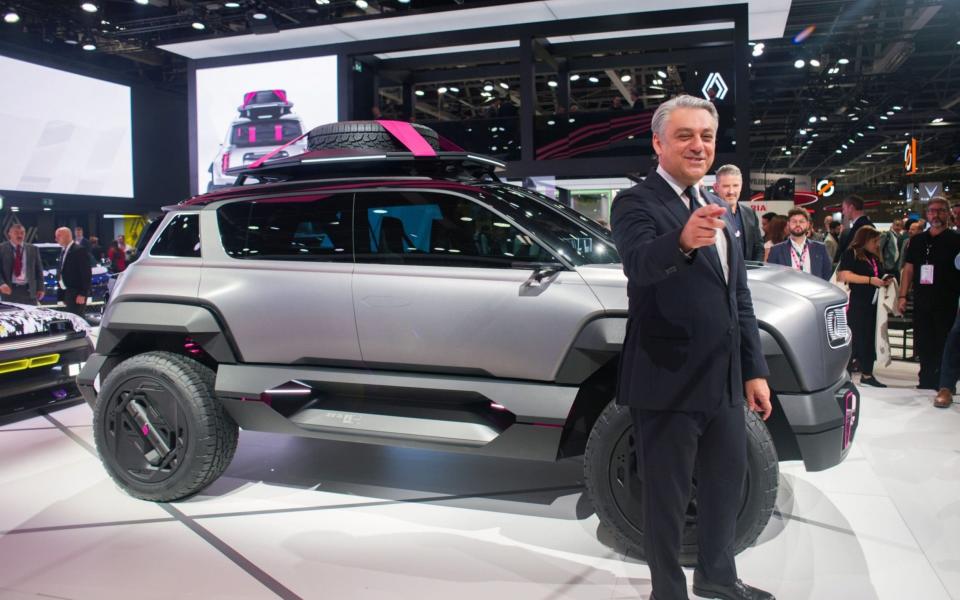New Euro 7 emissions regulations threaten a premature end of petrol and diesel engines

At Last, sang Etta James on her iconic 1960 hit, and the motor industry reacted in much the same way last week with the much-delayed publication of the European Commission’s proposals for the next generation of car emissions regulations, known as Euro 7. Unlike Etta James, however, they didn’t follow it up with My Love Has Come Along; in fact the reception for the Euro 7 standards has been distinctly frosty.
“The auto industry takes its role to reduce both CO2 and pollutant emissions very seriously,” commented Oliver Zipse, ACEA president and BMW chief executive. “Indeed, last year we made a very constructive proposal for a new Euro 7 which would bring a major reduction in criteria pollutants, thus improving air quality. Unfortunately, the environmental benefit of the Commission’s proposal is very limited, whereas it heavily increases the cost of vehicles [and] it focuses on extreme driving conditions that have hardly any real-life relevance.”
Stellantis, the European car making giant, was equally disparaging, pointing out that “in the context of a quick and compelled move towards electrification, Euro 7 is a diversion of key resources from that transition… [and puts] at risk affordable mobility”.
Stellantis boss Carlos Tavares was searing at last month’s Paris motor show. “We don’t need Euro 7,” he said, “because it will absorb resources and time which should be going into electric vehicles; it is counterproductive and we are reaching the limits in physics of what can be done.”

Most car makers were surprised by several aspects of the Euro 7 proposals.
“The timing was a complete surprise,” says Dr Wulf-Peter Schmidt, Ford’s director of sustainability, advanced regulation and product conformity. “That was one of my ‘oh no’ moments. The deadline of July 2025 was very different from what we had expected. This report has been subject to several delays and has been published late [about 12 months], but at the same time it is implementing the changes much earlier...”
The motor industry has been lobbying against these rule changes for the past few years, with many senior figures arguing they are distraction at a time when the motor industry is going through rapid changes, with huge demands on engineering and research and development (R&D) resources and investment money as they switch to a new world of electric cars, as well as the engaging in advanced research into safety, connectivity, fuel cells (for some) and autonomous driving.
“This [Euro 7] is going to cost me 80 per cent of my powertrain R&D for one year and it will have a marginal effect on emissions,” said Luca de Meo, Renault’s chief executive,during the Paris show, adding: “Even from an eco point of view it’s pointless, but us car executives aren’t popular in Brussels right now even though everyone thinks it [Euro 7] is not what we need.”
We’ll come back to the objections, but first what is Euro 7?
The new rules
Euro 7 replaces the previous emissions rules for cars and light commercials (Euro 6) and trucks and public service vehicles (Euro VI). It harmonises and builds on both sets of rules and claims to be agnostic about the drivetrain technology whether it is petrol, diesel, hybrid, battery electric or fuel cells, although not everyone thinks that is actually true. It affects us in Britain because the Government is committed to adopting European vehicle requirements and in cases such as emissions from motorcycles, going even further.
In detail, the requirements for emissions of nitrous-oxide (NOx) will continue to be 60mg/km for petrol engines and also diesels, which previously had been allowed to release up to 80mg/km. As one manufacturer says: “This will be simply massive for light commercials such as vans and pick-ups.” Larger trucks’ and buses’ NOx emissions will also be tightened.
Oxides of nitrogen are directly connected with suburban smog build-up and can cause damage to the human respiratory tract and increase vulnerability to and the severity of respiratory infections and conditions such as asthma.

What’s more, vehicles will have to maintain these emissions for a decade and up to 125,000 miles, which is twice the current requirement enshrined in Euro 6/VI regulations.
There are also proposed regulations regarding emissions of ammonia, evaporated hydrocarbon emissions caused by refuelling, cold-start emissions which might entail electric catalysts, the tallying up the amount of electrical recharging in plug-in hybrids and also for a minimum life of batteries in electric vehicles which, it is claimed, would reduce the requirement to replace the main drive batteries of EVs.
A much-discussed new emissions requirement is for microparticles coming off brakes and tyres. This also applies to electric vehicles which, while often easier than a petrol/diesel car on the wearing parts of brakes, are often harder on tyres as a result of their extra weight.
It is claimed that these proposals will, by 2035, lower total NOx emissions from cars and vans by 35 per cent compared with Euro 6, and 35 per cent for trucks and buses compared with Euro VI. Tailpipe particulates from cars will be reduced by 13 per cent and by 39 per cent from trucks and buses, while car brake particulates will be reduced by 27 per cent.
These requirements are designed to go hand in hand with already legislated reductions in CO2 emissions and those will be reviewed in the coming months. There’s also a rumour that by 2025 Plug-in Hybrid Electric Vehicles (PHEVs) will also be subjected to more realistic fuel consumption tests than the present ones.
Stings in the tail: early arrival
As well as being dramatic, the sting in the tail with these regulations is the early adoption date of Jul 1 2025 for all new cars and vans (not just all new model ranges), and by the same date two years later for new heavy-duty vehicles. Limited exceptions will apply to small volume manufacturers.
The other sting is that the regulations can be changed right up to 2024, by which time there will be virtually no time for car makers to design, engineer and certify any changes. We could be witnessing the sort of rush-to-test that accompanied the replacement of the old NEDC emissions and fuel consumption standards with WLTP and “real world” RDE standards. Car makers, which faced a huge requirement to retest all their vehicles in every single possible configuration, had to admit defeat. The result has been much streamlined vehicle ranges and less choice.
“Not all of it is clear yet,” says Ford’s Dr Schmidt, who says that a distinct possibility is that the current sensor technology won’t be accurate and durable enough to achieve the target requirements.
European-specific cars
There’s the usual self-congratulatory guff from the European Union, with claims it is pleased to be a “standard setter globally,” which basically means these proposals go further than those in pretty much any other main market. The EU justifies the proposals not just with the claim that they will improve European air quality, but that there will be concomitant improvements in countries outside the EU when and if these Euro 7-compliant cars are sold there.
Yet as one car maker pointed out, this is highly debatable. For a start, fuel standards in the developing world aren’t as high as those in Europe and using low-quality fuels will quickly damage a Euro 7-compliant engine. And the real time, over-the-air reporting of emissions required by Euro 7 will be difficult to implement in less developed countries where the internet and bureaucracy aren’t as advanced.
“Euro 7 proposals will result in very specific cars for Europe which you won’t be able to use across the globe,” said one engineer, citing the example of a car which hasn’t got the right fuel or isn’t able to update itself and which simply shuts itself down and refuses to start.
Was the EU listening?
Every car maker has been surprised at how little discussion with the EU there has been about the Euro 7 proposals, which is very different from previous negotiations on environmental standards. “We went into the meeting and made some points and they said thank you and walked out,” said one “There was no discussion.”

Disappointment seems to be the main sentiment, as Ford’s Dr Schmidt explains: “We tried to explain to the EU’s technical experts that the variability and sensitivity of the current generation of on-board monitoring sensors will not necessarily be good enough to meet the new regulations and that more expensive sensors might be required and that they might not be immediately available. We think they understood, but the European Commission has simply failed to take that on board.”
In other words, a new set of very expensive sensors might now be a service item in your next new car…
But did the EU actually listen to car makers and their engineers, or has it just laid down the law ignorantly and without considering those who can only just afford their individual mobility?
Dr Schmidt is wary of condemning all European politicians, but he gets the point. “I think it depends on the subject,” he says. “Ford is embracing the changes and wants to support them and make sure they work. We did work with the European Parliament on the 2035 regulations and encouraged them to lobby the member states about the need for an EV infrastructure. Some think we are just against everything, but that’s not true, we just want it to work.”
We’ve heard this from other manufacturers, too, particularly on the adoption of WLTP, which seems an object lesson in cooperation between the EU and car makers; it allowed the replacement of NEDC testing to WLTP to be shortened and made more effective. Even so, it caught some by surprise and the rush to homologate under WLTP meant Volkswagen, for example, was parking thousands of its new cars at Berlin’s new airport while they awaited certification.
Lack of specifics
It’s the lack of detail which has shocked car makers, who deal in specifics and long development, calibration and homologation timetables. Privately the European Commission is boasting that it hasn’t increased total limit values for oxides of nitrogen so car makers should be thankful, but actually what car makers are concerned about is the lack of boundary limits, in other words what the conditions are when the car is tested in the so-called “real-world” RDE tests.
The new proposals don’t seem to contain details of whether exceptions will be allowed for an engine which is working harder when heavily loaded, climbing steep hills, driving into a strong wind, overtaking, in cold conditions, or when towing a trailer or caravan, for example.
Nor are there any specifics about who will pay for any breaches. One engineer gave an example of a person who climbs into their car in the morning and joins a traffic jam, or overtakes on a cold day. In these circumstances it is highly likely that the engine will breach NOx emissions levels, but will the owner get a fine for something they can do little about, or will that particularly unwelcome envelope be sent to the car’s manufacturer?
Similarly, the inclusion of all new vehicles in the Euro 7 proposals is a surprise. Previously new standards would be applied to totally fresh model ranges, with existing models following suit in time. The inclusion of all vehicles will certainly mean more expense for manufacturers, but also involve some tough decisions about cars already on sale.
“The question is, what does it take [to meet the new requirements] and where does it make no sense?” says Dr Schmidt. “For vehicles which are going to end in 2027 or 2026, do we spend all that money for a life of just one or two years?”.

He admits that Euro 7 could cause the “premature death” of some car models.
And don’t go thinking it will be just petrol and diesel piston engines that could be dropped. The brake particulate levels and battery life requirements could also affect early electric vehicles as well as plug-in hybrids. “These changes could result in us having to make difficult decisions to our cycle plan over the next five years,” says Dr Schmidt; Ford is very far from alone in that respect.
Dr Schmidt says that over time the cost of the sensor technology will come down but, in the meantime, there is a balance to be struck between engineering existing vehicles and new ones and, without detailed requirements on Euro 7, striking this balance will be well nigh impossible.
“Due to the timing,” he says, “there will be a cost increase.”
Verdict
So, what does this mean to UK buyers? Certainly cars and driving are going to get even more expensive – and they’re also going to report to some unseen bureaucracy about your movements. Cars are an easy goal for environmental legislators to show they are doing something about climate change and air quality and they haven’t shied away from targeting them. But there is a worrying lack of detail in these proposals. Why is that?
One rumour we have heard which hasn’t been denied by any of the car makers is that these proposals, the timetable and their vagueness appear to be the EU’s way of preventing the development of new petrol and diesel engines by restricting the ability of car makers to amortise their development cost in the 12 years before internal combustion engines are totally banned from sale in 2035.
“But with this, manufacturers like Ford with an early all-EV plan are punished most,” says Dr Schmidt.
Tavares went somewhat further in Paris, saying: “The concern is not about the motor industry right now, but that our political leaders just don’t get it... if we continue to fragment the world and you make a [regulation] bubble in Europe then prices will go up. We need to start talking about the real stuff.”
Yet motoring is already too expensive for those who can least afford it, so what happens if prices go up further? As we’ve seen last week with the Chancellor’s decision to implement road tax (VED) on electric vehicles, the so-called Tesla Tax, as the cost of individual mobility heads inexorably upward the market is incredibly sensitive to relative pricing.
Tavares again: “It’s fine if you are rich and driving around in a new car in Berlin or London,” he said, “but what about the poorest people in Portugal [his home country], or other poorer European states? €25,000 [an industry-wide target for the cheapest new EVs] might be fine in Germany, but perhaps not in Greece or Portugal, and there they will continue to drive old diesel trucks.”
And where is the environmental benefit in that?

 Yahoo News
Yahoo News 
